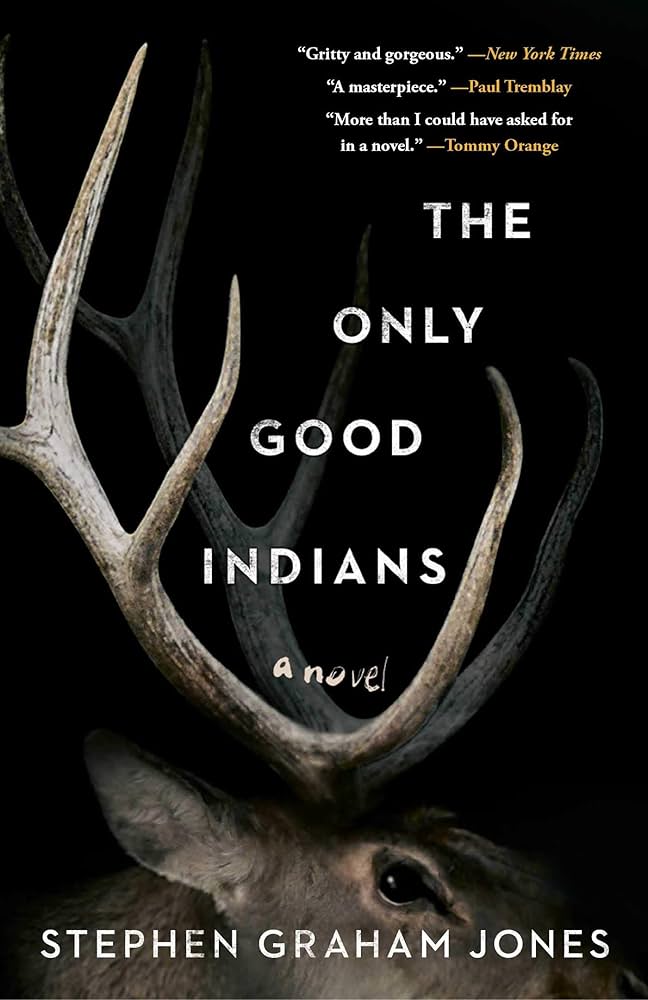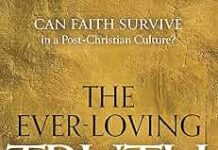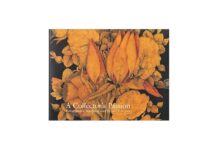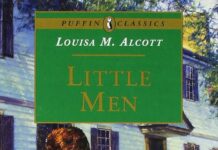In the vast landscape of contemporary horror fiction, few voices resonate with as much cultural depth and innovative storytelling as Stephen Graham Jones. His novel, The Only Good Indians, intertwines the chilling traditions of Native American heritage with the relentless dread of a supernatural reckoning. In this review, we delve into how Jones crafts a narrative that is as much about identity and community as it is about fear and retribution-inviting readers to explore the haunting intersections of past and present through a vivid, unsettling lens.
Exploring the Fusion of Horror and Indigenous Culture in The Only Good Indians and Its Impact on Genre Boundaries

Stephen Graham jones masterfully interweaves horror with indigenous cultural elements, crafting a narrative that transcends typical genre confines. The Only Good Indians delves deep into the complexities of Native American identity,spirituality,and modern struggles through the unsettling lens of horror. The novel doesn’t just scare; it invites readers to confront historical trauma and contemporary tensions faced by indigenous communities. This fusion manifests in ritualistic imagery, ancestral hauntings, and the ever-present clash between tradition and modernity - all while maintaining a pulse-pounding suspense that keeps the tension razor-sharp.
This innovative blend redefines what horror can achieve:
- Cultural Resonance: By embedding tribal customs and language, the narrative adds layers of authenticity and reverence rarely seen in mainstream horror.
- Emotional Depth: The characters’ internal conflicts reflect broader communal grief, making the horror both personal and collective.
- Genre Expansion: Jones challenges readers to see horror as a vehicle for cultural storytelling, not just scares.
| Element | Horror Aspect | Indigenous Influence |
|---|---|---|
| Setting | Forests & Wilderness | Sacred Lands & Ancestral Territories |
| Antagonist | Supernatural Entity | Spiritual Consequences & Tribal Mythology |
| Conflict | Fear & Survival | Cultural Identity & Legacy |
Unpacking Themes of Tradition, Identity, and Guilt That Haunt the Characters Throughout Stephen Graham Jones’s Novel
Throughout The Only Good Indians, tradition weaves itself into the very core of the characters’ existence, binding them to a past that refuses to stay buried. The novel exposes how ancestral customs,meant to preserve cultural identity,also serve as a double-edged sword-forcing characters into roles shaped by long-standing expectations while igniting a turbulent inner conflict. The weight of honoring heritage clashes with the burden of survival in a modern world that frequently enough feels alienating. This tension is palpable in the way moments of ritual and remembrance are shadowed by the specter of past transgressions, revealing that tradition is as much a haunting as it is a source of strength.
identities in Jones’s narrative are fluid yet fraught, shaped by both communal bonds and individual choices. Guilt permeates the story like a living entity, manifesting differently in each character-sometimes as silent remorse, other times as explosive regret. The novel’s exploration of this emotional landscape is intensified by its use of horror elements, where the supernatural not only frightens but symbolizes unresolved trauma. Below is a glimpse of how these themes interplay across the primary characters:
| Character | Connection to Tradition | Source of Guilt | Identity Conflict |
|---|---|---|---|
| Ricky | Hunted in ancestral hunting grounds | Breaking sacred hunting taboos | Struggling between modern life and tribal legacy |
| Lewis | Keeper of tribal stories | Survivor’s guilt and betrayal | Balancing personal ambition with community loyalty |
| Dena | Healer, connected to spiritual rituals | Past decisions with grave consequences | Reconciling cultural roots with individual freedom |
| Shoshana | Bound by family history | Carrying the weight of inherited sins | Facing the legacy of trauma |
A Close Look at the Novel’s Pacing and Atmosphere: How Suspense Builds with Unrelenting Tension and Emotional Depth
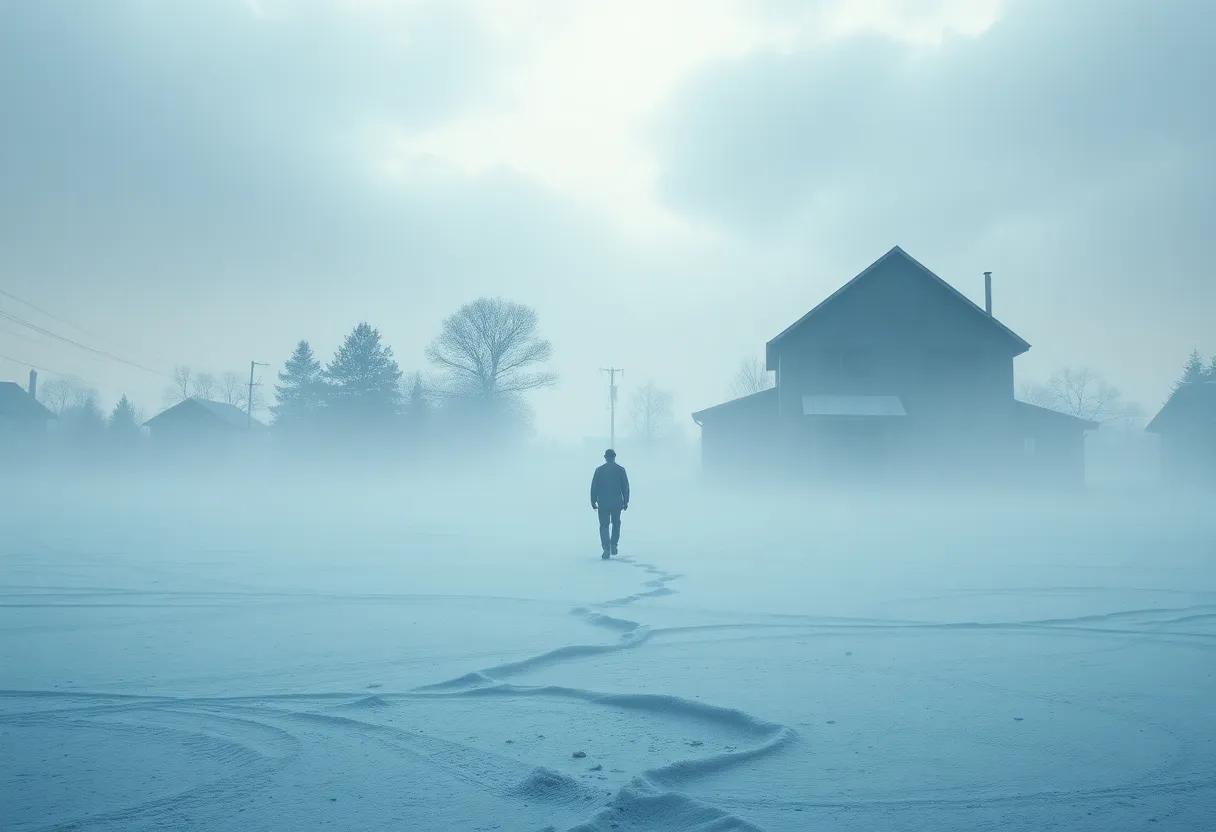
From the opening pages, the narrative propels readers into an unforgiving rhythm, where every moment brims with quiet menace. Stephen Graham Jones masterfully modulates the pacing, alternating between hauntingly slow reflections and sudden bursts of action. This deliberate ebb and flow holds the suspense taut, crafting an atmosphere thick with dread yet rich in emotional resonance. The characters’ internal struggles are laid bare with every tense encounter, making the reader feel the weight of their past mistakes and the looming consequences hanging over their heads like a dark cloud.
- Relentless tension: Jones’s prose rarely allows the reader a moment’s respite, emphasizing an ever-present threat beneath everyday scenes.
- Atmospheric Detailing: vivid imagery of natural landscapes and cultural symbolism roots the supernatural elements in lived reality.
- Emotional Depth: Inner conflicts and cultural identity layers elevate the horror from mere scares to profound,unsettling reflection.
| Element | Effect on Suspense | Contribution to Atmosphere |
|---|---|---|
| Slow-Burning Pacing | Builds anticipation and unease | Creates lingering dread |
| Sharp Dialog | Heightens tension between characters | Reveals cultural nuances |
| Supernatural intrusions | Disrupts normalcy, injecting fear | Blurs lines between reality and myth |
Character Development and Cultural Nuance: Authentic Portrayals That Challenge Stereotypes in Contemporary Horror Fiction

Stephen Graham Jones masterfully crafts characters whose complexities extend far beyond the confines of genre conventions. Within The Only Good Indians, individuals grapple not just with supernatural consequences but with the weight of cultural identity, history, and personal guilt. Each character’s arc is layered with emotional depth, reflecting genuine human struggles rather than falling into simplistic or caricatured portrayals. This nuanced approach enriches the narrative, allowing readers to engage with their internal conflicts alongside external horrors.
Rather than perpetuating one-dimensional tropes frequently enough seen in mainstream horror, Jones integrates cultural context in subtle, profound ways. The novel honors indigenous traditions while exposing the tensions and evolving identities within native communities. Elements such as oral storytelling, spiritual beliefs, and intergenerational trauma are intertwined organically, revealing how these aspects shape characters’ worldviews and actions. Consider the following facets that make the portrayal resonate so deeply:
- Authentic dialect and vernacular reflecting specific tribal languages and speech patterns.
- Depiction of community rituals as sources of strength and conflict.
- Complex family dynamics bridging tradition and modern challenges.
- exploration of identity crises within the broader context of cultural survival.
| Character | Key Cultural Element | Role in Story |
|---|---|---|
| Daryl | Connection to tribal traditions | Embodies the struggle between past and present |
| Ricky | Young adult perspective | Represents clashes with identity and peer pressure |
| Delvin | Community ties and guilt | Illustrates burden of ancestral expectations |
The Role of Setting and Landscape as Silent Characters Reflecting the Haunting Legacy of Heritage and Loss

In The Only Good Indians, the landscape transcends mere backdrop status, emerging as a dense tapestry woven with the threads of memory, trauma, and ancestral burden. The vast, sweeping plains and dense forests pulsate with a life of their own, mirroring the characters’ internal struggles and the unresolved tension between past and present. These settings whisper secrets-silent witnesses to a history stained by loss and cultural erasure. Rather than offering refuge, the land serves as an omnipresent force reminding the protagonists of their inescapable connection to heritage, tradition, and the haunting consequences of their actions.
The natural world becomes an active narrative agent, embodying the themes of memory and retribution through motifs and symbols:
- Bloodied snowfields symbolize the mingling of innocence lost and cyclical violence
- Shadowed forests act as liminal spaces where spiritual and physical worlds converge
- Stark plains reflect isolation and the stripping away of identity
| Setting Element | Symbolic Meaning | Emotional Resonance |
|---|---|---|
| Riverbanks | Flow of time, cleansing, renewal | Bittersweet hope amidst despair |
| Abandoned cabins | Decay, memory, lost tradition | Mourning for a vanished way of life |
| Desolate highways | Journey through trauma and identity | Alienation and confrontation with self |
Analyzing the Symbolism Behind Rituals and Ancestral Connections That drive the Narrative Forward
In The Only Good Indians, rituals are far more than cultural relics; they act as living conduits to the characters’ pasts, binding them to a legacy both sacred and burdensome. The traditional ceremonies and clan practices depicted in the novel serve as metaphors for identity, accountability, and the inescapable link between the present and ancestral forces. From hunting rites to communal gatherings, these moments pulse with layered meaning, revealing how rituals are not just actions but echo chambers of history and memory. they expose the tension between reverence for heritage and the weight of transgressions, making the supernatural elements feel grounded in real, emotional stakes.
Crucially, these ancestral connections operate on multiple narrative levels, weaving a complex web where past misdeeds ripple through time to shape the protagonists’ fates. The novel’s use of symbolic objects-such as masks, feathers, and sacred sites-illuminates this dynamic:
- Masks: Represent identity, concealment, and transformation, marking both protection and vulnerability.
- Feathers: Emblems of spiritual connection, freedom, and obligation to ancestors.
- Sacred Sites: Physical anchors to memory that trigger reverence, guilt, and supernatural retribution.
| Symbol | Meaning | Impact on Narrative |
|---|---|---|
| Mask | Identity & Transformation | Characters confront their hidden selves and cultural ties. |
| Feather | Spiritual Connection | Signals ancestral presence and moral obligation. |
| Sacred Site | Memory & Retribution | Triggers supernatural consequences and self-realization. |
Balancing Supernatural Elements with real-World Trauma: The Novel’s approach to Horror as Social Commentary
Stephen Graham Jones masterfully entwines supernatural horror with the palpable scars of real-world trauma, crafting a narrative that resonates far beyond typical genre confines. The spectral elements in The Only Good Indians aren’t mere spooky embellishments; they act as metaphors for generational pain and cultural dislocation. Jones uses the haunting as an inescapable force, paralleling the characters’ internal battles with identity and history. This duality challenges readers to confront uncomfortable truths about community, loss, and the cyclical nature of trauma, all while navigating the eerie and the uncanny.
The novel’s social commentary becomes vivid when the horror is dissected into layers-each revealing diffrent facets of contemporary Native American experiance. rather than providing resolution, the supernatural manifestations emphasize persistent societal wounds. Jones explores themes such as:
- Displacement and alienation within modern and ancestral contexts
- The consequences of silence surrounding cultural and personal trauma
- The clash between tradition and assimilation, and its psychological toll
This nuanced interplay forms a complex texture, where horror serves as a prism refracting the harsh realities beneath - allowing the story to evolve into a thought-provoking social critique.
| Aspect | Supernatural Element | Real-World Parallel |
|---|---|---|
| Ghostly Pursuit | Unrelenting spirits seeking justice | Historical trauma resurfacing in present |
| Ritualistic Imagery | Ancient tribal customs invoked | Preservation of cultural identity |
| Physical Manifestations | Injuries from otherworldly attacks | Psychological wounds from oppression |
The Narrative Structure’s Effectiveness in Delivering Shocking Revelations While Maintaining Reader Engagement
Stephen Graham Jones masterfully crafts a narrative that oscillates between foreboding suspense and raw emotional depth, enabling shocking revelations to land with maximum impact. The novel’s structure is neither linear nor predictable; instead,it weaves together past and present,blending folklore,personal trauma,and cultural identity. This fragmented timeline mirrors the shattered lives of the characters, forcing readers to piece together the mystery like a puzzle. With every chapter, carefully placed hints and unsettling moments build tension, culminating in moments of revelation that both surprise and resonate, reinforcing the thematic weight of the story.
The balance between unpredictability and coherence is further enhanced by the use of multiple perspectives. Each viewpoint adds layers to the narrative, offering intimate insights into the characters’ psyche while advancing the plot. This method accomplishes two key objectives:
- Maintaining suspense: Readers are kept in a state of anticipation as details is selectively revealed.
- deepening engagement: The diversity of voices encourages empathy and deeper understanding.
Below is a brief overview of how these structural elements interact:
| Structural Element | Effect on Reader | Example from Novel |
|---|---|---|
| Non-linear timeline | Mystery and tension buildup | Flashbacks revealing cultural trauma |
| Multiple perspectives | Expanded emotional depth | Alternating chapters with different narrators |
| Foreshadowing | Heightened suspense | symbolic imagery and cryptic dialogue |
Through these deliberate structural choices, Jones doesn’t just tell a story-he orchestrates a haunting experience that grips the reader at every turn, ensuring the novel’s startling revelations land with both shock and meaning.
How The Only Good Indians Contributes to Indigenous Storytelling Through Innovation and Respectful Representation
The Only Good Indians masterfully intertwines traditional Indigenous lore with contemporary horror, forging a narrative that respects the depth and diversity of Native experiences. Stephen Graham jones refuses to confine indigenous identities to the past; instead,he presents characters grappling with generational trauma,cultural displacement,and modern societal pressures. The novel’s innovation lies in its ability to weave supernatural elements-rooted deeply in tribal beliefs-into an accessible, yet profoundly unsettling story that honors cultural specificity without resorting to stereotypes. This delicate balance invites readers to engage with Indigenous storytelling in a fresh and meaningful way.
The book’s respectful representation is further highlighted through its authentic voices and practice of cultural nuance.Jones includes:
- Rich character development that prioritizes emotional depth over caricature;
- Incorporation of tribal languages and customs that enrich the narrative texture;
- Exploration of complex identity dynamics,addressing the tension between assimilation and preservation.
Through these elements, The Only Good Indians does not simply retell Indigenous stories-it reclaims them.It challenges mainstream literary norms by positioning Indigenous perspectives at the forefront, fostering a dialogue that respects tradition while embracing contemporary realities.
| Aspect | Contribution to Indigenous Storytelling |
|---|---|
| Innovation | Fusion of horror with tribal mythology |
| Representation | Nuanced portrayal of modern Indigenous identities |
| Respect | Authentic voices and cultural accuracy |
Recommendations for readers Seeking a Thought-Provoking and Chilling horror Experience Rooted in cultural Identity
Stephen Graham Jones’s The Only Good Indians offers a masterful blend of horror and cultural reflection, making it an essential read for those craving stories that dig deep into identity and tradition. The novel’s strength lies in its seamless integration of indigenous spirituality and contemporary fears,crafting a terrifying narrative that feels both timeless and urgently modern.Readers who appreciate horror that transcends jump scares and instead lingers in the psyche will find this book resonant and unforgettable. Its exploration of guilt, community, and ancestral reckoning invites readers to confront not only supernatural horrors but also the real-world complexities of cultural survival and legacy.
For those looking to dive into this chilling experience, consider these reading strategies:
- Immerse in the Context: Familiarize yourself with Blackfeet culture and folklore to fully appreciate the novel’s layered symbolism.
- Reflect Between Chapters: Take a moment to ponder the characters’ motivations and cultural struggles, which enrich the horror beyond its surface.
- Discuss with Fellow Readers: Sharing impressions can unpack deeper meanings related to identity and tradition.
| Aspect | Why It Matters | Recommended for |
|---|---|---|
| Cultural Roots | Authentic indigenous perspectives enhance horror elements | Readers seeking meaningful cultural narratives |
| Psychological Depth | Explores guilt and trauma beyond surface scares | Fans of character-driven horror |
| Atmospheric Storytelling | Creates a chilling, immersive mood | Those who love slow-burning suspense |
Comparative Insights: Where The Only Good Indians Stands Among Modern Horror and Indigenous Literature
The Only Good Indians stands out as a formidable merger of modern horror tropes with the rich,often overlooked narratives of Indigenous life. Unlike conventional horror that relies heavily on universally recognizable monsters or ghostly hauntings, Stephen Graham Jones root his terror in the tangible consequences of cultural trauma and intergenerational pain. This grounding in lived experience creates a visceral tension, where the supernatural elements act not just as scares but as metaphors for the characters’ struggles with identity, community, and survival. The book’s interplay between traditional storytelling and contemporary horrorscapes showcases an evolution in Indigenous literature-a genre that increasingly embraces complexity and nuance without sacrificing cultural authenticity.
When compared to other works in modern horror and Indigenous literary circles, Jones’s novel occupies a distinct space characterized by:
- Cultural specificity: It highlights Blackfeet heritage with precision, avoiding the pitfalls of generalized Indigenous representation.
- Psychological depth: Protagonists wrestle with guilt and existential dread reinforced by supernatural hauntings.
- Genre fluidity: Seamlessly blending horror,thriller,and socio-political commentary.
| Aspect | The only Good Indians | Typical Modern horror | Indigenous Literature |
|---|---|---|---|
| Narrative Focus | Interwoven trauma & folklore | external threats & suspense | Cultural legacy & resilience |
| Use of Supernatural | Symbolic & culturally specific | Primarily fear-inducing | Varied, often spiritual |
| Emotional Impact | Guilt & cultural obligation | Shock & adrenaline | Identity affirmation |
Visual and Emotional Imagery That Amplifies the Haunting Experience Beyond Traditional Horror Tropes
Stephen Graham Jones masterfully weaves a tapestry of visual elements that transcend the usual horror aesthetics, plunging readers into a sensory overload where the familiar becomes disturbingly alien. his descriptions of the vast montana landscapes are painted with a surreal brush, turning serene forests and quiet lakes into stages for unsettling phenomena. The author’s use of shadow and light, often described through ominous shifts in weather or the unsettling silence that precedes violence, constructs an atmosphere thick enough to choke the breath of both characters and readers alike. This approach invites an immersive experience where dread lingers not only in what is seen but in what is left undefined or obscured-highlighting how fear can thrive in the borderline between visibility and darkness.
Emotionally, the novel delves deep into the characters’ psyches, evoking a complex interplay of guilt, cultural displacement, and inevitability. Jones does not rely on jump scares or gore but instead crafts haunting imagery that speaks to the inner turmoil and ancestral wounds carried by the protagonists. The haunting becomes as much a psychological and spiritual battle as a physical confrontation. Key emotional motifs include:
- Isolation: Both physical and emotional, underscoring the characters’ estrangement from their community and themselves.
- Memory and Trauma: Scenes evoking flashbacks and fragmented recollections emphasize the inescapability of past sins.
- Nature’s personification: Where landscapes themselves seem to mourn, judge, or threaten, reflecting the characters’ inner states.
| Imagery Element | Effect on Reader | Example |
|---|---|---|
| Fog and Mist | Creates uncertainty and suspense | Shrouding the victims in an almost supernatural veil |
| Cracked Mirrors | Symbolizes fractured identity | Characters confronted with distorted reflections |
| Silent Forests | Amplifies isolation and dread | Nature’s eerie stillness contrasts with internal chaos |
Profile of Stephen Graham Jones: The Visionary Author Behind The Only good Indians and His Influence on Contemporary Literature
Stephen Graham Jones stands as a formidable force in contemporary literature, seamlessly fusing elements of horror, culture, and identity. An enrolled member of the Blackfeet Nation,Jones brings a rich indigenous perspective to genres often devoid of such voices,challenging mainstream narratives and expanding the horizons of American fiction. His writing is marked by a profound understanding of tradition, community, and the spectral echoes of history, which he masterfully weaves into suspenseful and unsettling stories. This unique blend elevates his work beyond genre constraints, inviting readers to confront the lingering specters of cultural trauma and resilience.
Jones’s creative vision is reflected not only in his powerful storytelling but also in his contributions to contemporary literary conversations. Among his notable influences are:
- Reclamation of indigenous narrative – championing stories that center Native experiences with nuance and respect.
- Genre-bending innovation – blending horror, literary fiction, and folklore to create immersive, thought-provoking tales.
- Exploration of identity and place – delving into how personal and collective histories shape present realities.
| Aspect | Impact |
|---|---|
| Cultural Authenticity | Deepens understanding of Native American experiences |
| Fictional Innovation | Redefines traditional horror tropes |
| Literary Influence | Inspires a new generation of diverse writers |
The Only Good Indians stands as a haunting pilgrimage through memory, culture, and result-Stephen Graham Jones weaving a tapestry that lingers long after the final page. Whether you journey through its shadows for the chilling suspense or the profound reflections on identity and tradition, this novel refuses to be quietly forgotten. It invites readers to confront the ghosts both personal and collective, making The Only Good Indians not just a story to be read, but an experience to be reckoned with.

